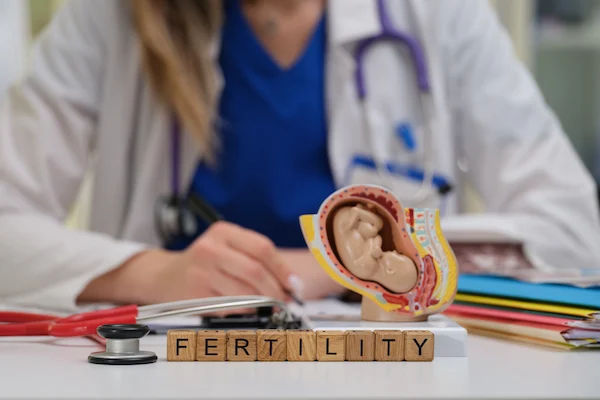Understanding Lymphocytes
Explore the vital role of lymphocytes, key cells in the immune system. Learn about their types (B cells, T cells, NK cells), functions, and how they defend the body against disease.

Written by Dr. Rohinipriyanka Pondugula
Reviewed by Dr. Vasanthasree Nair MBBS
Last updated on 29th Oct, 2025

Introduction
If you’ve ever noticed “lymphocytes” on your blood test and wondered what they mean, you’re not alone. Lymphocytes are a key type of white blood cell that help your body recognize germs, fight infections, and remember past invaders. Understanding lymphocytes can make your lab reports less intimidating and your health decisions more informed.
In this guide, you’ll learn what lymphocytes are, the differences between T cells, B cells, and natural killer (NK) cells, and what normal counts look like on a complete blood count (CBC). We’ll explain what it means when lymphocytes are high (lymphocytosis) or low (lymphopenia), how infections and vaccines affect them, and when to seek medical advice. You’ll also get practical tips for reading your CBC report and evidence-based ways to support your immune health. By the end, you’ll have a clear, patient-friendly roadmap to understanding lymphocytes—and what your numbers may be telling you.
What Are Lymphocytes?
Lymphocytes are specialized white blood cells that recognize specific threats, such as viruses or abnormal cells, and coordinate targeted responses to eliminate them. They are central to adaptive immunity—your body’s “smart” defense system that learns, adapts, and remembers—while some lymphocytes (like NK cells) provide rapid, front-line protection as part of the innate response.
Why lymphocytes matter in everyday health?
- They fight infections: Lymphocytes identify infected cells and either destroy them directly or produce antibodies to neutralize pathogens.
- They build immune memory: After an infection or vaccination, some lymphocytes become long-lived memory cells.
This is why many vaccines protect you for years. - They maintain balance: Regulatory lymphocytes help prevent overreactions that could harm healthy tissues
(autoimmunity).
Lymphocytes vs. other white blood cells
- Your white blood cell (WBC) team includes neutrophils, monocytes, eosinophils, basophils, and lymphocytes.
Neutrophils are quick responders against bacteria; lymphocytes are the precision specialists for viruses and long-term protection. On a CBC, lymphocytes are reported as a percentage and as an absolute lymphocyte count (ALC), typically 1,000–4,800 cells per microliter (µL) in adults. The ALC is often the more meaningful number because percentages can shift if other WBC types change.
Consult a Top General Physician
Types of Lymphocytes and What They Do?
T cells: CD4 “helper,” CD8 “killer,” and regulatory T cells
- CD4 helper T cells orchestrate immune responses—cueing B cells to make antibodies and guiding CD8 cells to infected
targets. - CD8 cytotoxic T cells directly destroy virus-infected or cancerous cells.
- Regulatory T cells (Tregs) act as brakes, preventing excessive inflammation and autoimmunity.
B cells: Antibodies and long-term memory
- B cells mature into plasma cells that secrete antibodies—proteins that recognize and neutralize pathogens or tag them
for destruction. Memory B cells persist after infection or vaccination, enabling faster, stronger responses if you’re exposed again.
Natural killer (NK) cells:
- Rapid response to infected and abnormal cells
- NK cells are “innate-like” lymphocytes that act quickly, identifying cells that look abnormal (e.g., missing certain “self”
signals). They can trigger cell death and help control early viral infections and survey for cancerous changes.
Where Lymphocytes Come From and Where They Work?
Bone marrow and thymus: Training grounds
- All lymphocytes originate in the bone marrow. B cells mature there, while T cells migrate to the thymus to “train” and
learn to distinguish friend from foe. Defects in these steps can lead to immunodeficiencies.
Lymph nodes, spleen, and mucosal tissues: Meet-and-greet hubs
- Lymph nodes: Immune hubs where lymphocytes scan antigens brought from tissues. If they recognize a threat, they
proliferate and differentiate—this is when you might feel swollen, tender nodes. - Spleen: Filters blood; lymphocytes here respond to blood-borne pathogens.
- Mucosa-associated lymphoid tissue (MALT): In the gut, airways, and other mucosal sites, specialized lymphocytes
provide frontline defense where pathogens commonly enter.
Lymphatic highways and recirculation
- Lymphocytes circulate continuously between blood and lymph, homing into lymph nodes through high endothelial venules (HEVs) and exiting via different lymphatics. This constant traffic maximizes their chances of meeting the right antigen at the right time.
Normal Lymphocyte Counts and How They’re Measured?
Absolute lymphocyte count (ALC) vs. percentage: Why ALC matters
- ALC = WBC count × lymphocyte percentage.
- Adult ALC reference range is commonly around 1,000–4,800/µL; in children, it’s higher (about 3,000–9,500/µL), reflecting developing immunity.
- Because the percentage can change when other WBC types go up or down (e.g., neutrophils during bacterial infections),
the ALC is more reliable for judging true lymphocyte changes.
Age, time of day, and other factors that shift lymphocyte levels
- Age: Infants and young children naturally have higher lymphocyte counts that decline toward adult ranges with age.
- Time of day: Cortisol peaks in the early morning, which can lower circulating lymphocytes; late-day draws may show slightly higher ALC.
- Stress and steroids: Acute stress and glucocorticoids can lower lymphocyte counts (lymphopenia).
- Smoking: May raise WBC counts, including lymphocytes, in some individuals.
- Recent infection or vaccination: Temporary rises or falls can occur depending on the immune response phase.
High Lymphocytes (Lymphocytosis): Causes, Symptoms, Next Steps
Common causes: Infections, smoking, post-splenectomy
- Viral infections (e.g., Epstein-Barr virus/mono, cytomegalovirus, hepatitis, measles) often raise lymphocytes. Reactive
or “atypical” lymphocytes are common in mono. - Bacterial pertussis can cause marked lymphocytosis due to toxins that alter immune cell trafficking.
- Smoking and post-splenectomy status can be associated with higher counts
- Autoimmune conditions and certain drug reactions occasionally contribute.
When to worry: Leukemias, lymphomas, persistent high counts?
- Persistent ALC above roughly 4,000/µL in adults warrants evaluation for chronic lymphocytic leukemia (CLL) and other lymphoproliferative disorders; CLL is often suspected with sustained ALC > 5 × 10^9/L (5,000/µL) and confirmed with flow cytometry.
- “B symptoms” such as unexplained fever, night sweats, and unintended weight loss, or large, firm, non-tender lymph nodes, merit prompt medical attention.
Evaluation and initial tests
- CBC with differential and peripheral smear (to look for atypical or abnormal cells).
- Viral tests depending on symptoms (e.g., EBV/mono tests, HIV when appropriate).
- Flow cytometry to determine lymphocyte subsets and identify abnormal clones (e.g., CD5+ B cells in CLL).
If you have persistent high lymphocytes with concerning symptoms, consult a doctor online with Apollo 24|7 for further evaluation. Apollo 24|7 also offers a convenient home collection for CBC testing, which can be a practical first step.
Low Lymphocytes (Lymphopenia): Causes, Risks, Next Steps
Acute illness, medications, and chronic conditions
- Acute stress, surgery, and corticosteroid medications commonly reduce lymphocyte counts.
- Chemotherapy, radiation, severe malnutrition, and some autoimmune diseases (e.g., lupus) can cause lymphopenia.
Infections like COVID-19 and HIV
- COVID-19: Lymphopenia is frequently observed and can correlate with illness severity in hospitalized patients.
- HIV: Targets CD4 T cells, progressively reducing their numbers and impairing immunity without treatment.
What your doctor may test and when to act?
- Repeat CBC after recovery from an acute illness to confirm persistent lymphopenia.
- Check lymphocyte subsets (CD4, CD8, B, NK) with flow cytometry if counts remain low.
- Consider testing for HIV, hepatitis, and nutritional deficiencies based on context; in recurrent or unusual infections,
evaluation for primary immunodeficiency may be indicated.
Red flags include recurrent infections, unexplained fevers, chronic diarrhea, weight loss, or severe fatigue. If symptoms persist beyond two weeks, consult a doctor online with Apollo 24|7 for further evaluation. If your condition does not improve after trying supportive measures, book a physical visit to a doctor with Apollo 24|7.
Unique insight: The clinical significance of mild lymphopenia depends on the whole picture—age, medications,
symptoms, and repeated measurements. A single low value in a well adult after a viral illness often normalizes within weeks.
Lymphocytes During Infections and Vaccination
Reactive/atypical lymphocytes and what they mean
In infections like mono (EBV), lymphocytes become “reactive,” appearing larger with more cytoplasm on a smear.
These are healthy immune cells ramping up to fight infection—not necessarily malignant cells. Atypical lymphocytes
can also appear in CMV and some drug reactions.
Vaccines, immune memory, and boosters
Vaccination primes B and T cells to recognize pathogens. After vaccination, antibody levels rise and memory
lymphocytes persist, enabling faster, stronger responses to future exposures. In older adults, timing and adjuvants can
influence responses; some studies suggest morning vaccination may modestly improve antibody responses to influenza in this group
A practical example: Mono vs. cold
- Viral cold: Often mild lymphocyte changes, quick recovery.
- Mono (EBV): Fatigue, sore throat, swollen nodes, atypical lymphocytes on smear, positive heterophile antibody test in many teens/young adults; activity restrictions to protect the spleen may be advised.
Interpreting Your CBC: Practical Tips and Pitfalls
Trends over time beat one-off numbers
- Compare your ALC across time, not just one reading.
- Review your health context (recent illness, vaccines, stress, medications).
Pre-analytic factors: Hydration, stress, and timing
- Dehydration can concentrate blood; hydration status can subtly affect counts.
- Morning cortisol can lower circulating lymphocytes; if possible, try to draw at similar times for consistency.
- Recent intense exercise may transiently shift immune cell distributions.
When to order more tests (flow cytometry, viral serology)?
- Flow cytometry: Distinguishes lymphocyte subsets (T, B, NK) and identifies abnormal clones when malignancy is suspected.
- Viral serology or PCR: EBV, CMV, HIV, hepatitis tests based on symptoms and risk.
- Peripheral smear: Helpful to identify reactive vs. suspicious cells.
Apollo 24|7 offers convenient home collection for CBC tests, which can simplify serial monitoring. If your results are unclear or concerning, an online consult can help determine next steps.
How to Support Healthy Lymphocyte Function? (Evidence-Based)
Sleep, nutrition, and movement
- Sleep: Aim for 7–9 hours. Sleep loss impairs vaccine responses and immune coordination.
- Nutrition: Ensure sufficient protein, vitamin D, zinc, and a plant-forward diet rich in polyphenols. Severe deficiencies can impair lymphocyte development and function.
- Movement: Regular moderate exercise supports immune surveillance; avoid sudden, extreme overtraining, which can transiently suppress some immune functions.
Stress management and avoiding overtraining
- Chronic stress elevates cortisol, which can suppress lymphocyte numbers and function. Techniques like mindfulness, breathing exercises, and social connection can help.
- Build rest days into training plans to avoid “open windows” of reduced immunity after exhaustive exercise.
Vaccinations and preventive care myths vs. facts
- Vaccines train lymphocytes without causing the disease itself, reducing the risk of severe illness if exposed later.
- Supplements are not magic bullets; a balanced diet and sleep have stronger evidence than megadoses of single vitamins.
When to See a Doctor and What to Expect?
Red flags: Fevers, night sweats, weight loss, big nodes
See a clinician if you have:
- Persistent fever, drenching night sweats, or unexplained weight loss.
- Lymph nodes larger than 2 cm, hard or fixed nodes, or rapidly growing nodes.
- Recurrent or unusual infections, prolonged fatigue, or easy bruising/bleeding.
Testing pathway and how Apollo 24|7 can help
- First-line tests often include CBC with differential and a peripheral smear; additional labs depend on your symptoms.
- If counts are persistently abnormal, flow cytometry and targeted infection tests may follow.
- If symptoms persist beyond two weeks, consult a doctor online with Apollo 24|7 for further evaluation. Apollo 24|7
offers home collection for CBC and related tests, and can coordinate referrals for imaging or hematology if needed.
Unique insight: Many transient lymphocyte changes resolve with time and recovery. The goal is to balance timely evaluation of red flags with avoiding unnecessary alarm for mild, short-lived abnormalities.
Conclusion
Lymphocytes are the precision players of your immune system—recognizing threats, coordinating responses, and remembering past infections and vaccinations. Understanding your absolute lymphocyte count (ALC), how it’s measured, and what can affect it helps turn a confusing lab panel into meaningful health information. Most fluctuations are temporary, especially after infections or periods of stress. When levels stay too high or too low, a focused evaluation—starting with a CBC, peripheral smear, and sometimes flow cytometry—can uncover the cause and guide treatment. You can support healthy lymphocyte function by prioritizing sleep, balanced nutrition, regular movement, and stress management, and by staying current with recommended vaccines. If symptoms like persistent fever, night sweats, weight loss, large lymph nodes, or recurrent infections occur, seek medical advice. If results are unclear or you need guidance, consider consulting a doctor online with Apollo 24|7, and use home collection for CBC to simplify follow-up. With the right information and support, you can confidently navigate what your lymphocytes are telling you—and take practical steps to protect your health.
Consult a Top General Physician
Consult a Top General Physician

Dr. Rajib Ghose
General Physician/ Internal Medicine Specialist
25 Years • MBBS
East Midnapore
VIVEKANANDA SEBA SADAN, East Midnapore

Dr. Ajay K Sinha
General Physician/ Internal Medicine Specialist
30 Years • MD, Internal Medicine
Delhi
Apollo Hospitals Indraprastha, Delhi
(200+ Patients)

Dr. Zulkarnain
General Physician
2 Years • MBBS, PGDM, FFM
Bengaluru
PRESTIGE SHANTHINIKETAN - SOCIETY CLINIC, Bengaluru

Dr. Abhishek Ranjan
General Practitioner
4 Years • MBBS
Kolkata
VDC Clinic, Kolkata

Dr. Soumen Paul
General Physician/ Internal Medicine Specialist
24 Years • MBBS
Kolkata
MCR SUPER SPECIALITY POLY CLINIC & PATHOLOGY, Kolkata
(50+ Patients)
Consult a Top General Physician

Dr. Rajib Ghose
General Physician/ Internal Medicine Specialist
25 Years • MBBS
East Midnapore
VIVEKANANDA SEBA SADAN, East Midnapore

Dr. Ajay K Sinha
General Physician/ Internal Medicine Specialist
30 Years • MD, Internal Medicine
Delhi
Apollo Hospitals Indraprastha, Delhi
(200+ Patients)

Dr. Zulkarnain
General Physician
2 Years • MBBS, PGDM, FFM
Bengaluru
PRESTIGE SHANTHINIKETAN - SOCIETY CLINIC, Bengaluru

Dr. Abhishek Ranjan
General Practitioner
4 Years • MBBS
Kolkata
VDC Clinic, Kolkata

Dr. Soumen Paul
General Physician/ Internal Medicine Specialist
24 Years • MBBS
Kolkata
MCR SUPER SPECIALITY POLY CLINIC & PATHOLOGY, Kolkata
(50+ Patients)
More articles from Infectious diseases
Frequently Asked Questions
1) Is a lymphocyte percentage of 50% normal?
It depends on your absolute lymphocyte count (ALC). Percentages can be misleading if other white cells are low or high. Check the ALC (adults typically 1,000–4,800/µL) and discuss context with your doctor.
2) What causes high lymphocytes in blood?
Common causes include viral infections (like mono) and pertussis; smoking and post-splenectomy states can contribute. Persistent high counts may signal conditions like chronic lymphocytic leukemia (CLL) and need evaluation, often with flow cytometry.
3) What are atypical lymphocytes?
They’re reactive lymphocytes that appear larger and more active on a smear during infections (e.g., mono). They’re usually a sign of a vigorous immune response—not cancer.
4) How can I increase low lymphocytes naturally?
Focus on fundamentals: adequate sleep, balanced protein and micronutrients (vitamin D, zinc), regular moderate exercise, and stress reduction. If low counts persist or you have recurrent infections, consult a doctor to check for underlying causes.
5) When should I worry about my lymphocyte count?
Red flags include persistent abnormalities, an ALC persistently above about 4,000–5,000/µL in adults, or below about 1,000/µL with symptoms like recurrent infections. If symptoms persist beyond two weeks, consult a doctor online with Apollo 24|7 for further evaluation.




